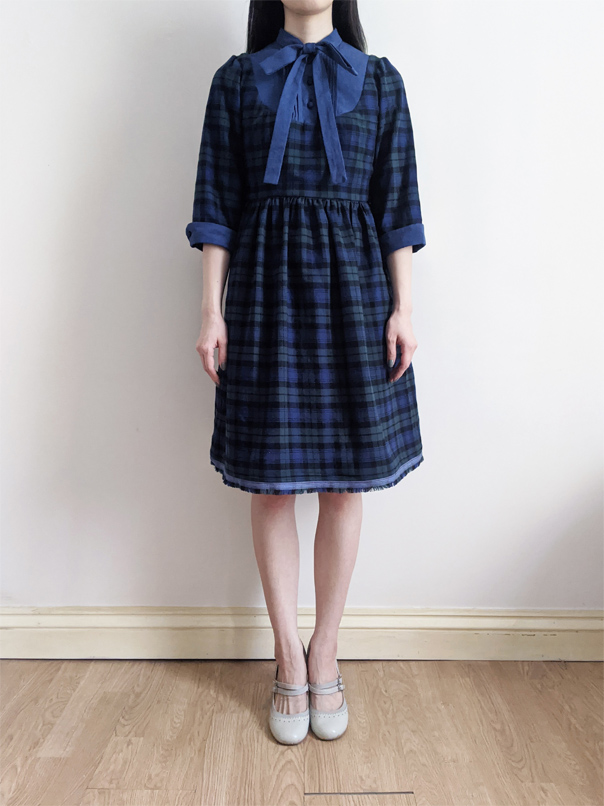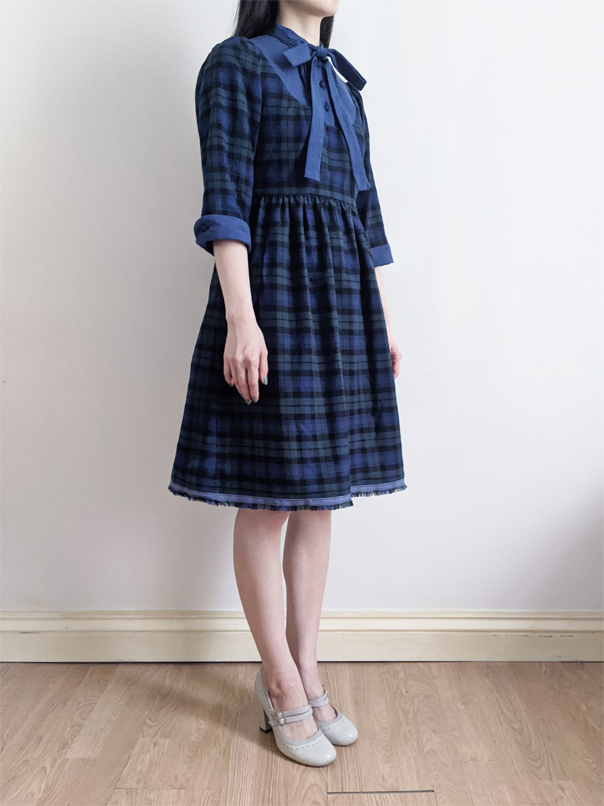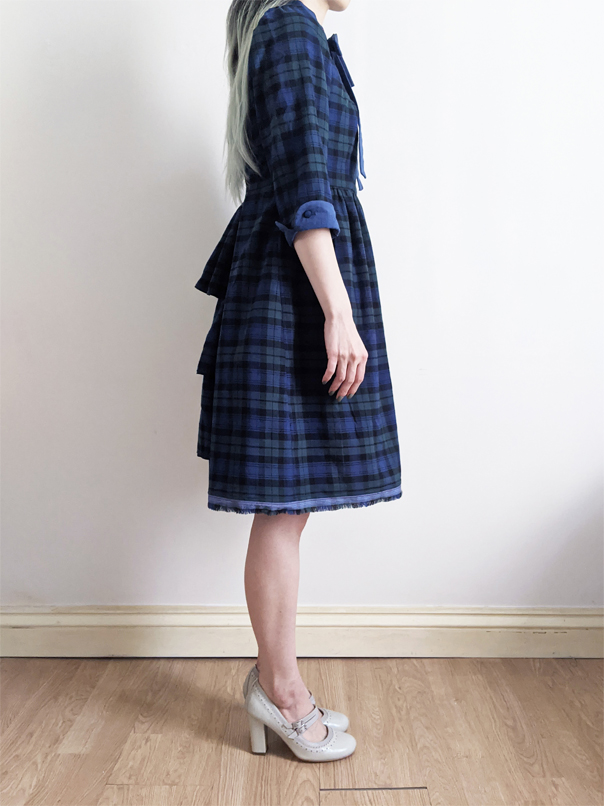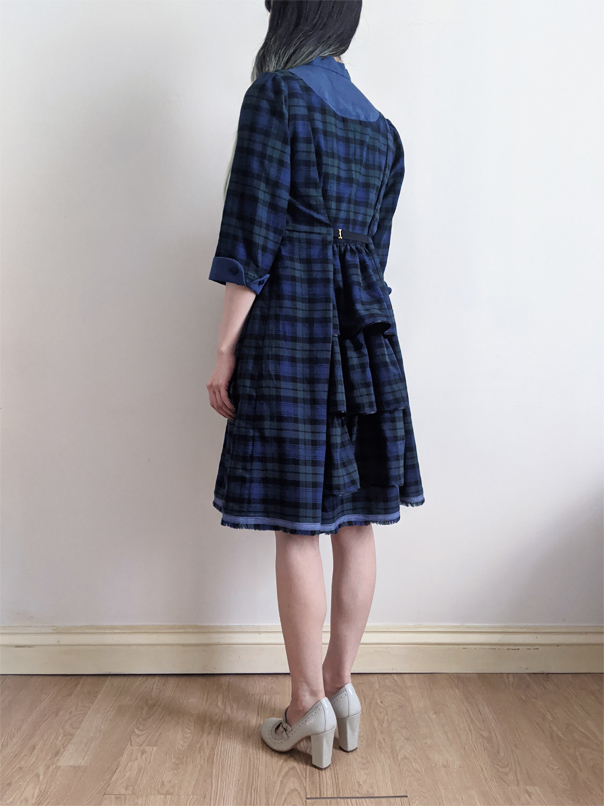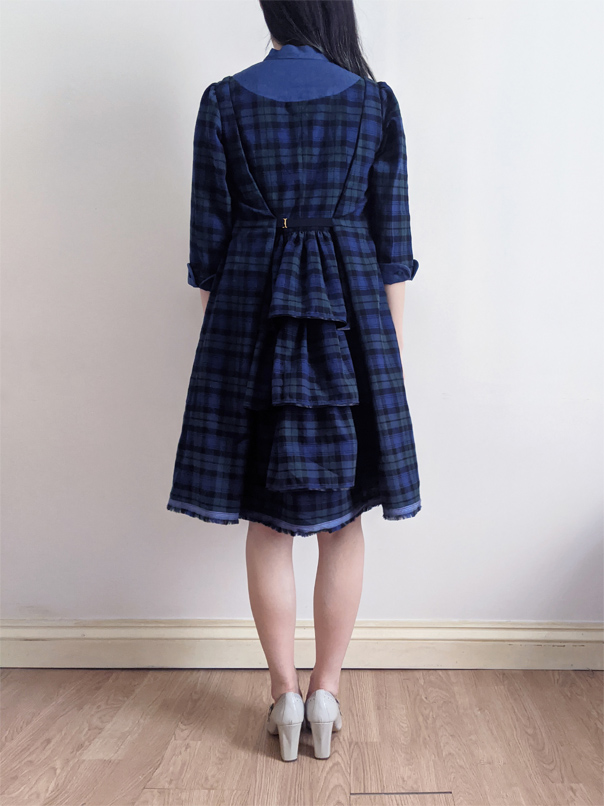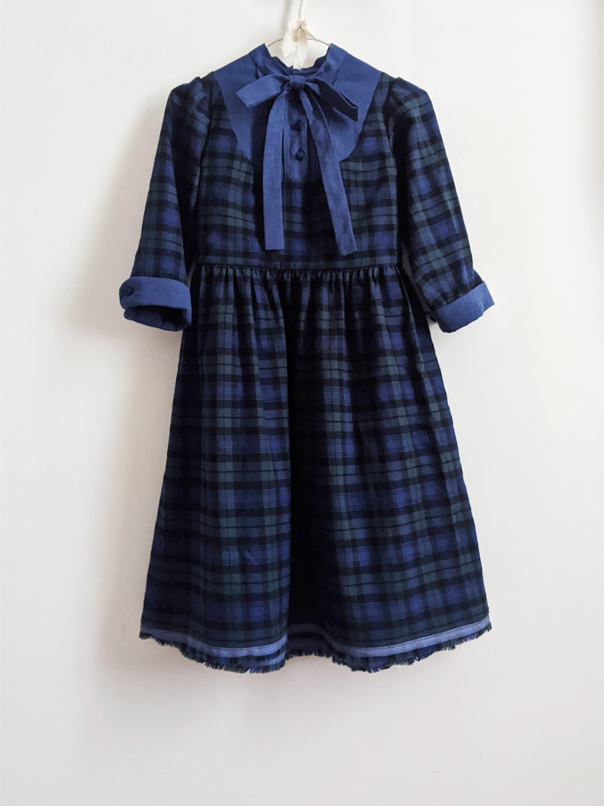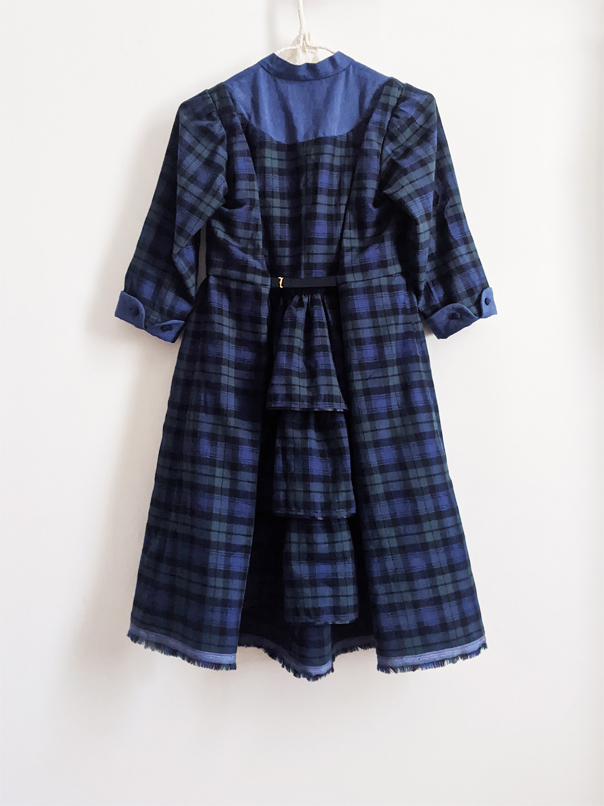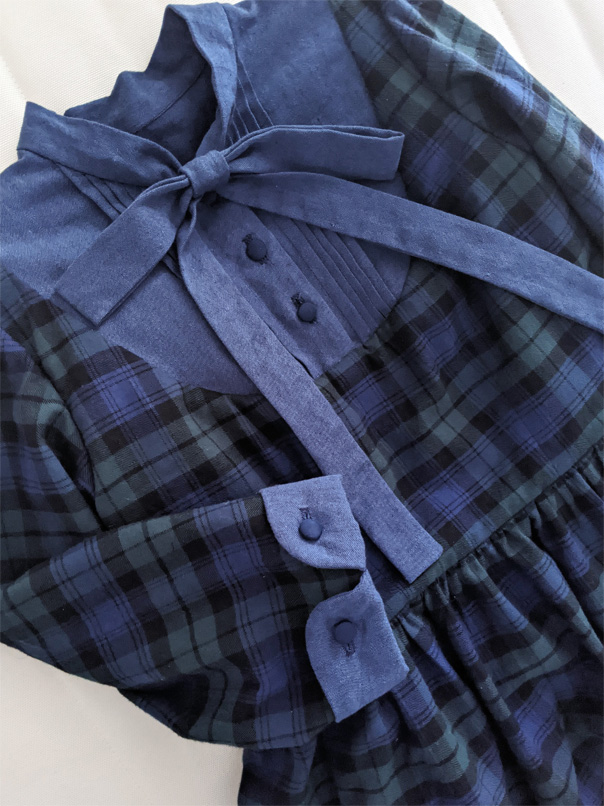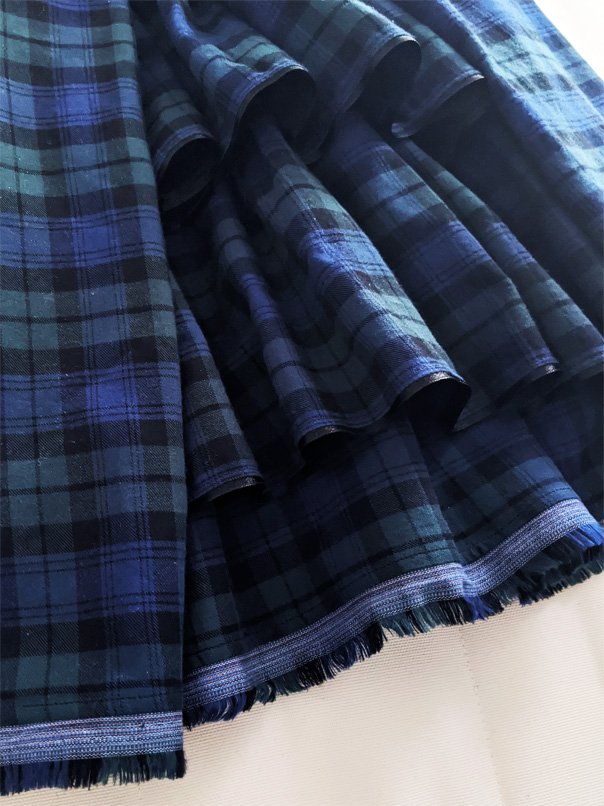This is the final version of the commissioned maid dress made with black watch tartan fabric. It is basically the same as the prototype but it has a very different feel to it because of the fabric/colour combination. The main fabric is a soft woven tartan fabric in cotton and the contrast fabric used for the bib section and cuffs is a blue chambray cotton.
Black satin ribbons are used on the three tiered ruffles on the back skirt as trimmings. And, I would like to point out that the selvedge of the tartan fabric has been used for the hem. I noticed that the selvedge looked rather nice when I was cutting the fabric and decided to used it. Naturally, it matches the dress very well.
The bow tie is actually different from the prototype although it is not obvious. Unlike the prototype, which had loose ribbons to tie into a bow, this one has a pre-made bow with an elastic loop at the back to put the ends of the loose ribbons through it. The customer said she is fond of bow tie necklines but finds it difficult to tie a good-looking bow by herself so this was my solution.
The maid dress takes a lot of time to make due to the complicated construction and the number of pieces to sew together. It took even more time for this one as using patterned fabric means I had to make the patterns align and match up perfectly. However, the maid dress is certainly cute and beautiful in my opinion. I hope I will get to create different versions in the future too.
